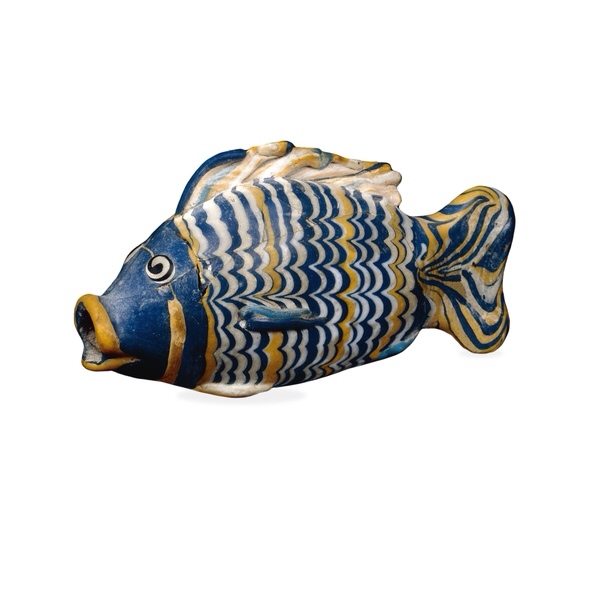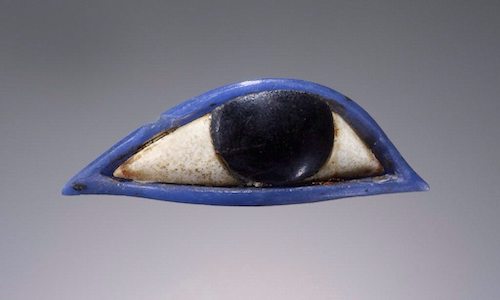
The first examples of man-made glass date only to the last quarter of the 3rd millennium BC when glass beads were first made in Egypt and Mesopotamia. The first ancient glass vessels were made in the middle of the 2nd millennium BC in Mesopotamia and Egypt. These were made by molding on a mud or sand core which was made in the shape of the desired vessel. Viscous glass was applied to this core. The surface of the vessel was then decorated with threads of colored glass and teased into decorative patterns. The piece was then rolled on a flat surface and a handle and a base were added. The colours used in this early period suggest that the makers were trying to imitate precious stones such as lapis-lazuli and turquoise. The manufacture of glass vessels began at approximately the same time in Egypt and in northern Mesopotamia but it appears that the core technique was invented in Mesopotamia and introduced into Egypt later. The high-point of ancient Egyptian glass came in the El Amarna period (first half of the 14th century BC). The beautiful glass eye shown above, made of glass and gypsum is among the oldest glass objects in the world.
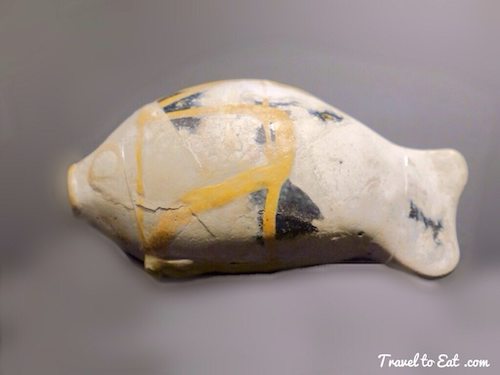
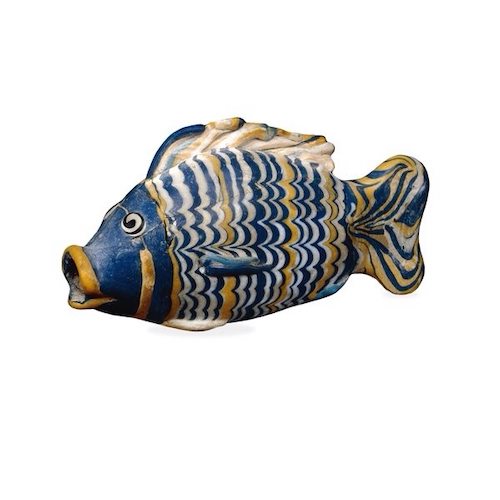
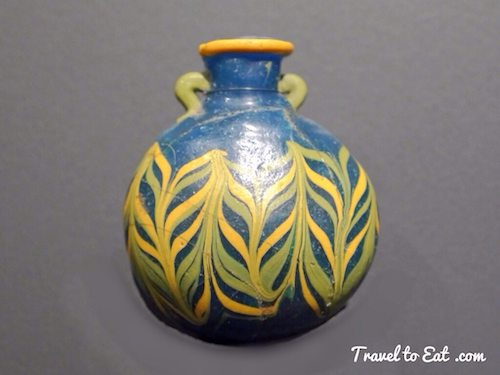
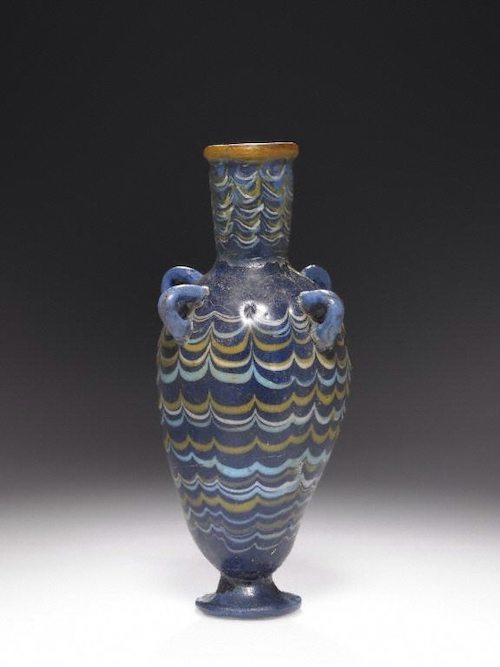
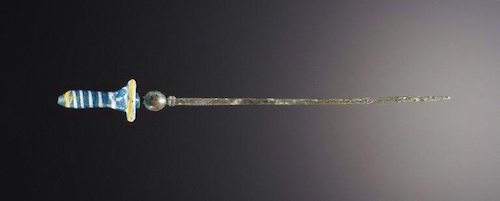
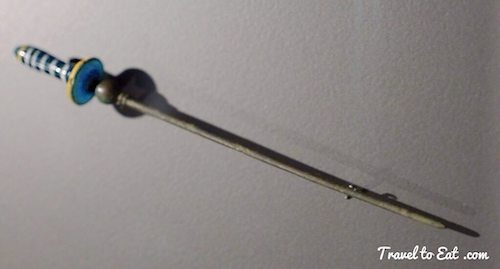
As in Mesopotamian and Syrian glass, most Egyptian glass vessel shapes were copies of those that already existed in materials like clay or stone. But the lentoid or lentil-shaped form may have developed among glassmakers and influenced other media rather than the other way around. To create this vessel, the glassmaker gathered hot glass around a core made of animal dung and clay, supported by a rod. After the shape was formed, the handles and yellow trail were added. Once the vessel had slowly cooled, the core was removed from inside the finished vessel.
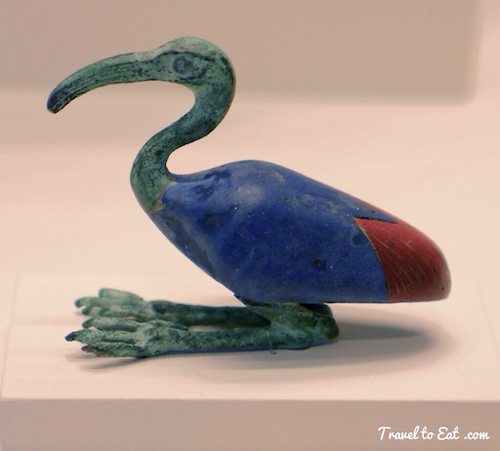
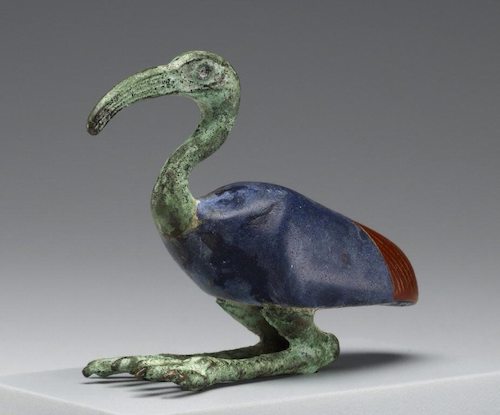
I really love this glass and bronze Ibis, despite the fact that it is not all that ancient. At this point I have presented most of the Egyptian glass at the Getty Villa. I have three final pieces from Persia.
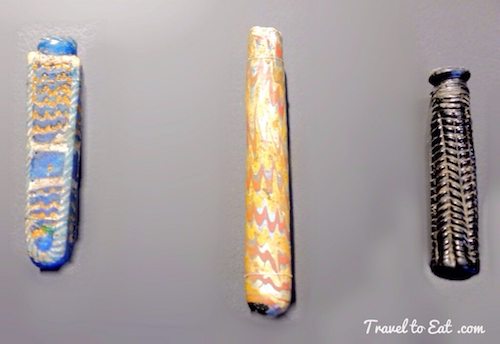
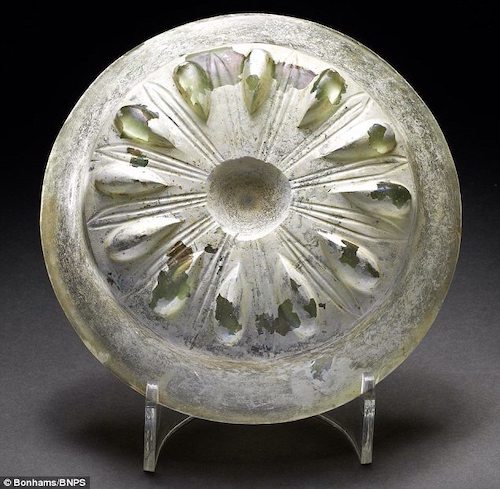
The Achaemenid Empire was founded in the 6th century BC by Cyrus the Great, who to this day is venerated as one of the greatest figures in Persian history. Its rulers presided over the largest empire in the history of the world at the time, stretching from Egypt and Greece as far as modern-day India. Emperors such as Xerxes and Darius fought a series of wars with the Greeks, immortalized in the works of Herodotus, known as the “Father of History”. The dynasty came to an end in 334 BC, when Alexander the Great invaded from Macedonia and imposed Greek rule over Persia. In 2013 the 2,500 year old Achaemenid glass bowl shown above sold in London for £481,250. It was made shortly before Macedonian king Alexander the Great invaded in 334 BC. The exact history of the bowl before it came to the UK is unknown, but it would have been a highly prized object owned by a wealthy Persian family.
Since I have already devoted three posts to glass objects, the next post will explore the origins of glass and glass production in Egypt.
References:
Glass in Mesopotania and Egypt: http://www.iprospero.com/shpusa/books/chapters/Alchemy_of_Glass.pdf
Persian Glass Bowl: http://www.dailymail.co.uk/news/article-2318350/2-500-year-old-kind-glass-bowl-ancient-Persian-Empire-sells-500-000–times-estimate.html

